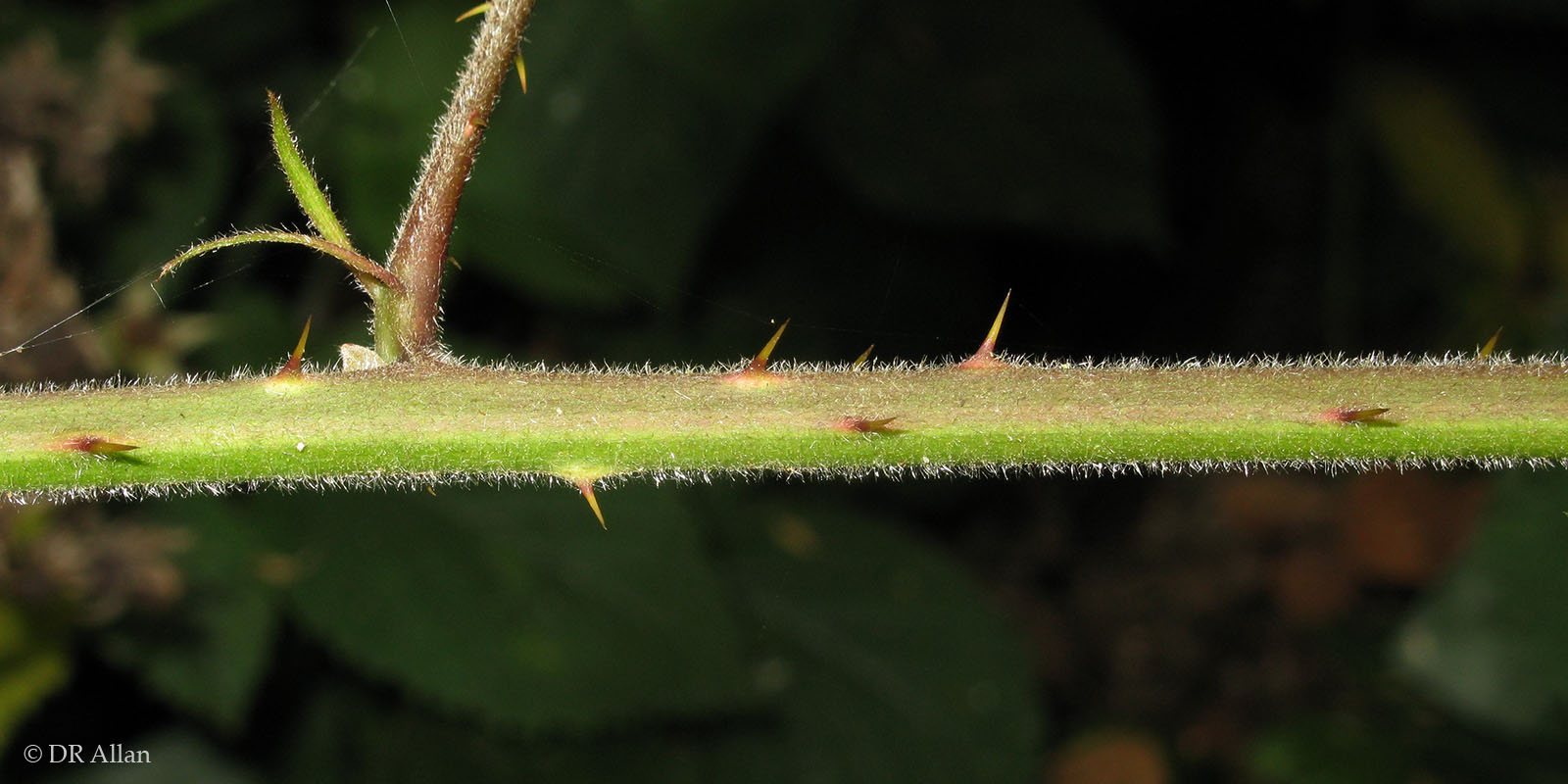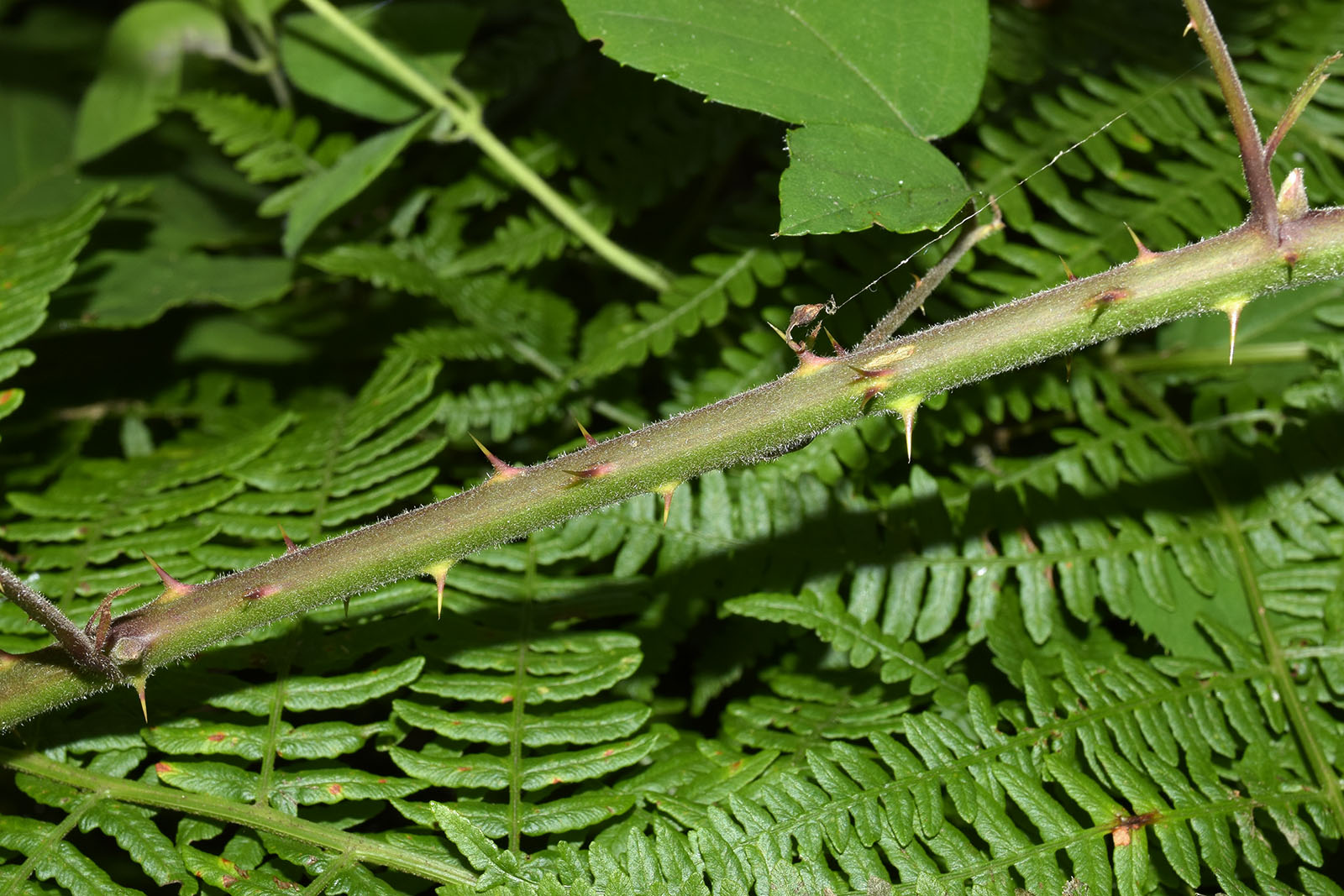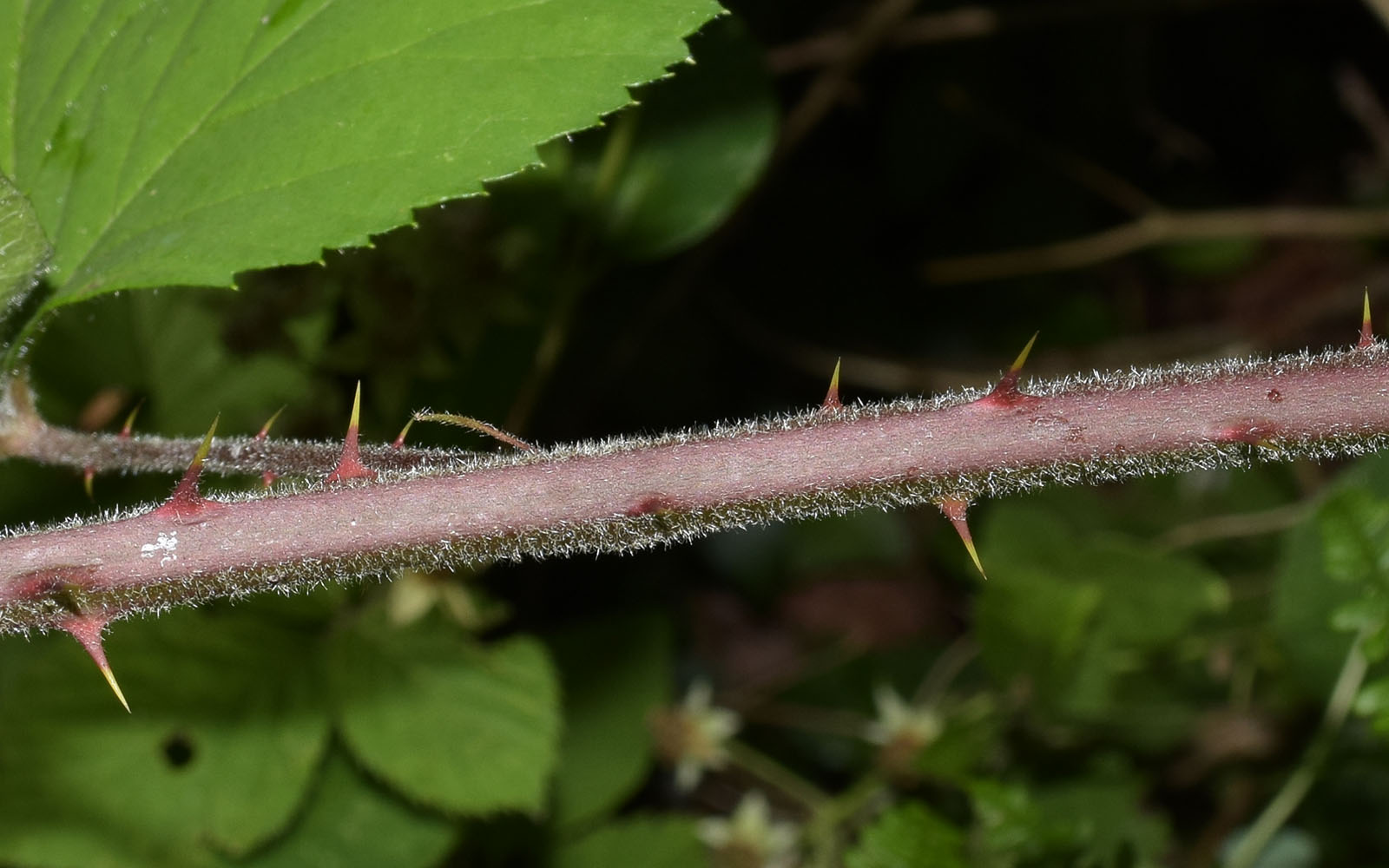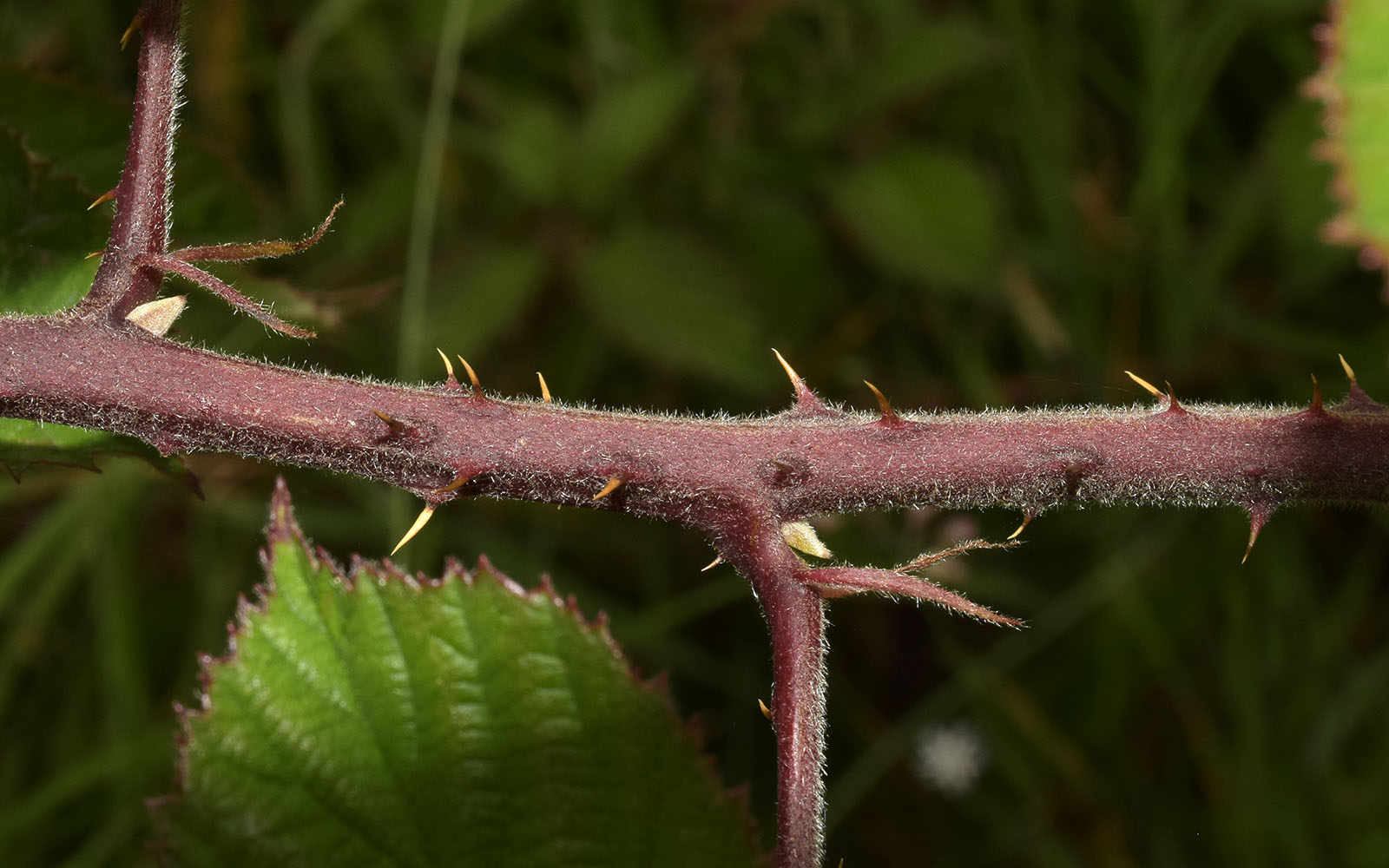
Rubus lanaticaulis – Series Vestiti
back to Alphabetical index · Taxonomic index
This is a typical member of the Vestiti, having pink flowers and densely hairy stems, with stalked glands only scattered and inconspicuous on the plant. It is widespread in western Britain and Ireland but only just reaches Scotland in Ayrshire. Most of the photos shown here are of an outyling colony in an ancient wet alder wood in Gosport, Hampshire which I discovered in 2005. It seems likely, therefore, that this species prefers warm and moist oceanic environments. It can be found in most typical bramble habitats, including woodland, hedgebanks and heathland.
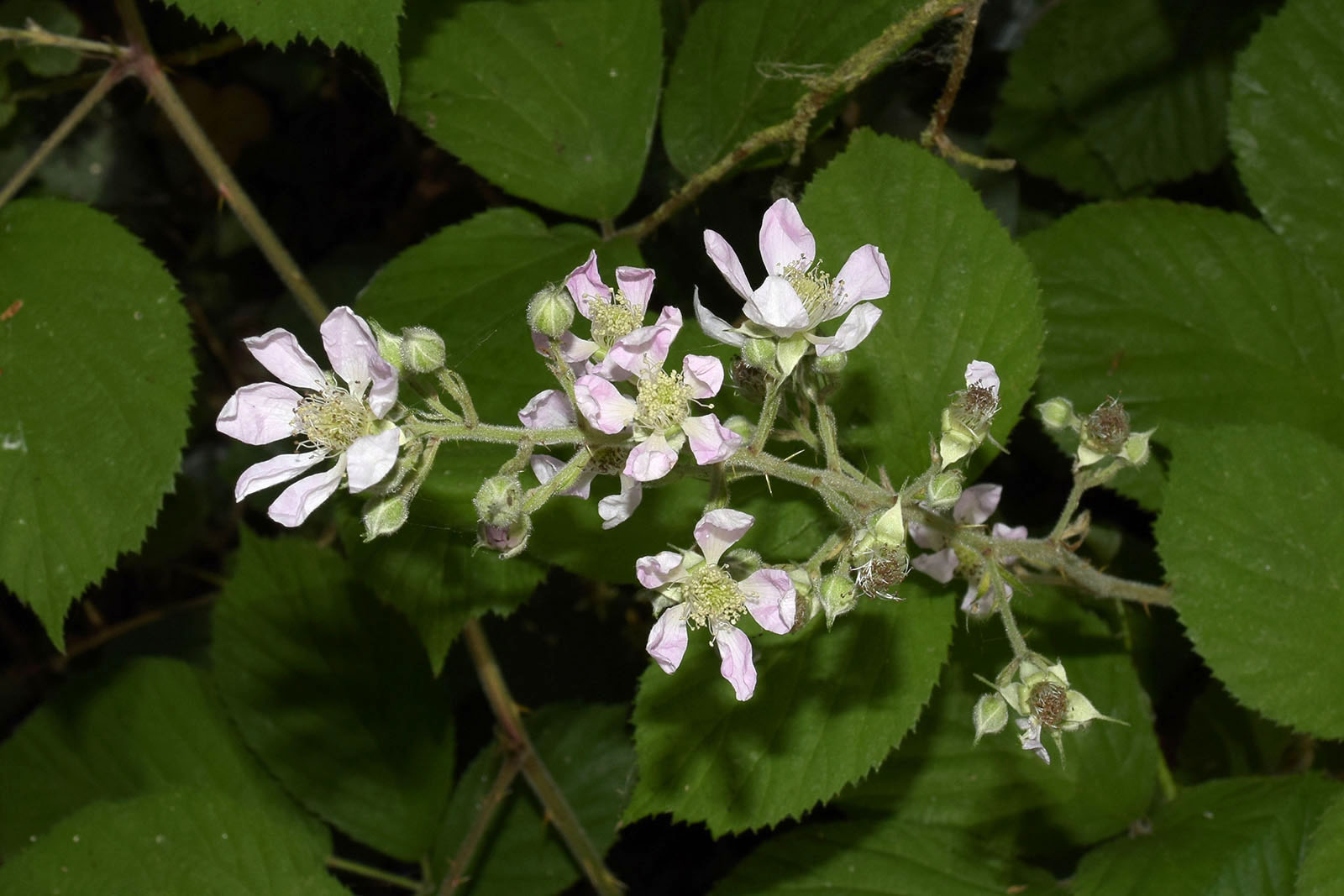
The flowering panicle is relatively large, consisting of a cylindrical terminal portion of relatively densely congested flowers which is non-leafy or with one or two single leaves below. Side branches are progressively longer; these are subtended by 3-foliolate or sometimes full-sized 5-foliolate leaves, giving an overall broad pyramidal shape to the panicle. The leaflets are whitish-grey felted below. All the panicle branches are widely divergent, and especially short and stout in the terminal portion. Like the stems they are densely pubescent and have fine prickles which are straight to gently curved. A few tiny short-stalked glands may be present within the hairs. The rachis and floral branches turn reddish-brown if exposed to the sun.
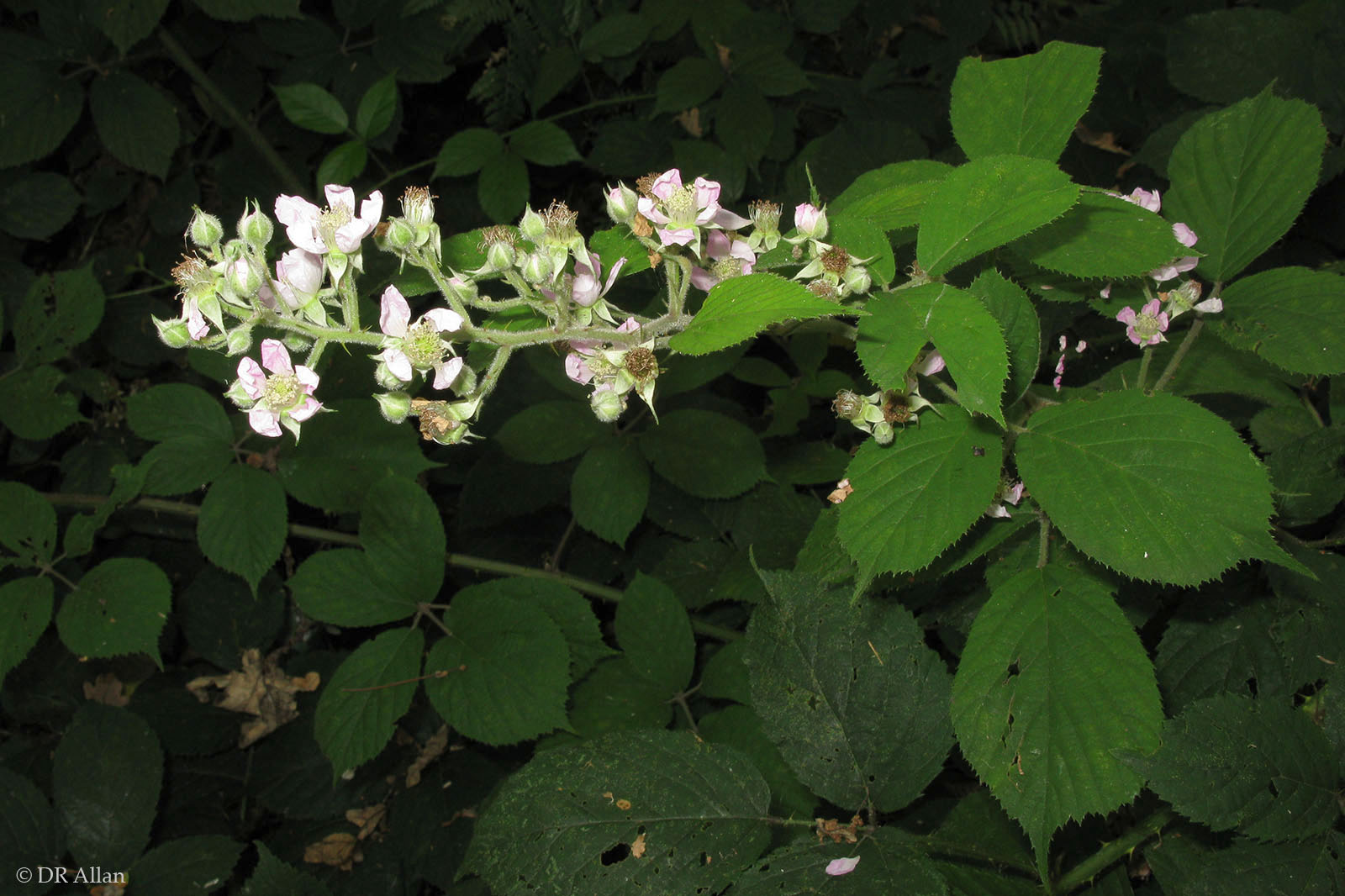
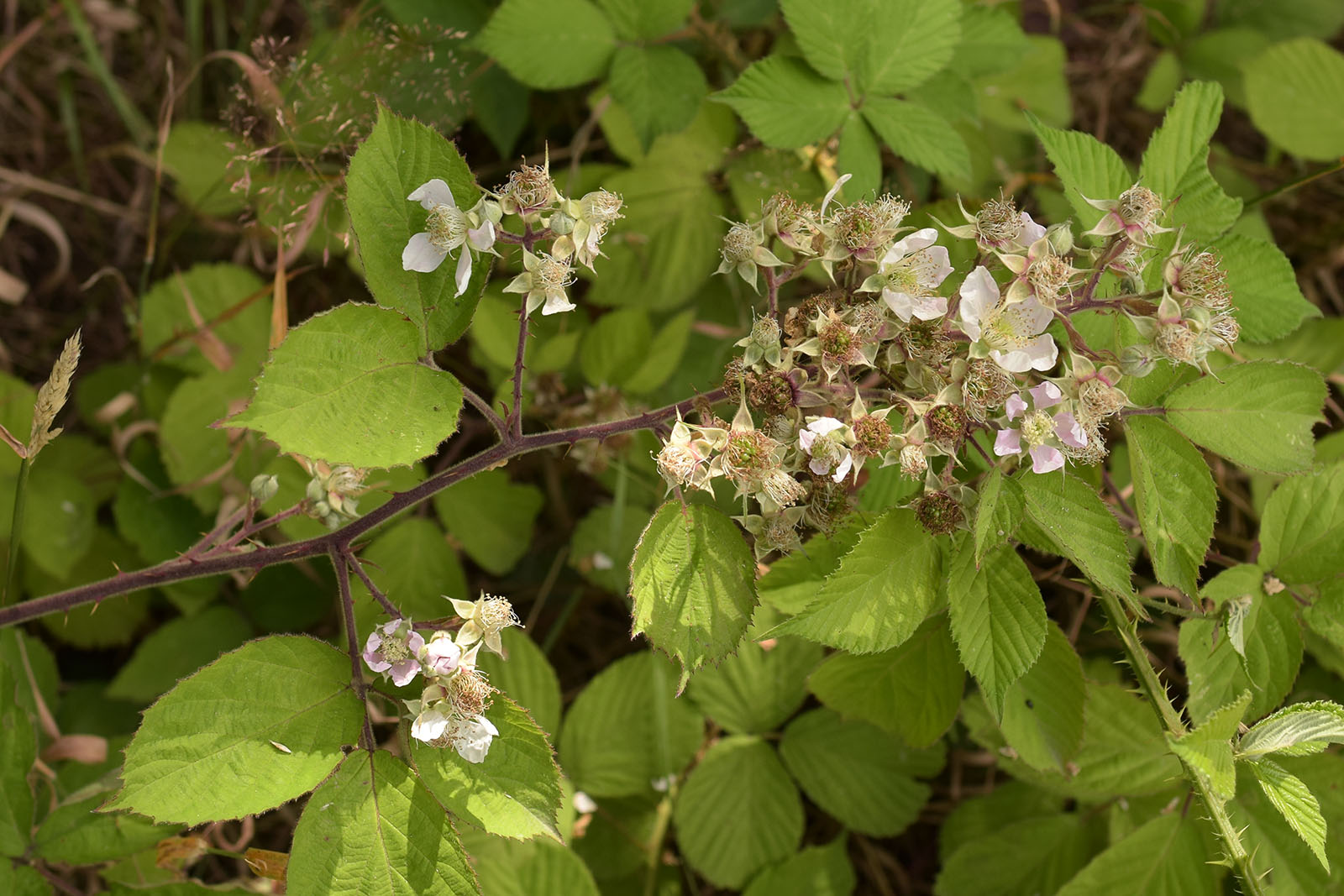
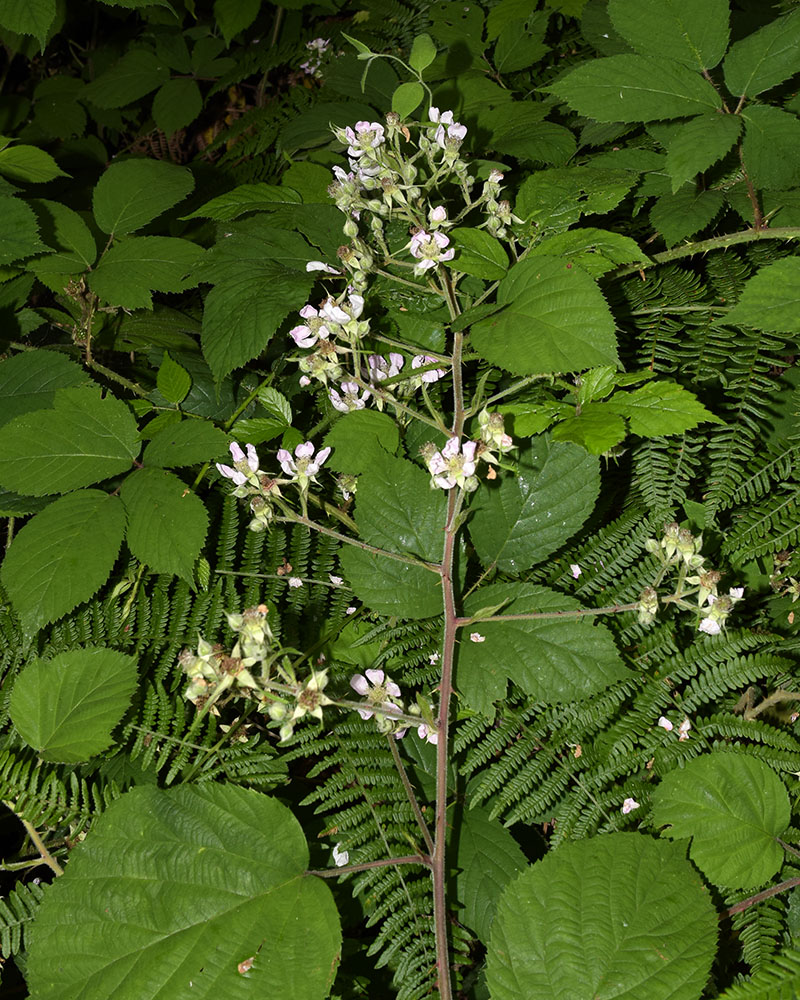
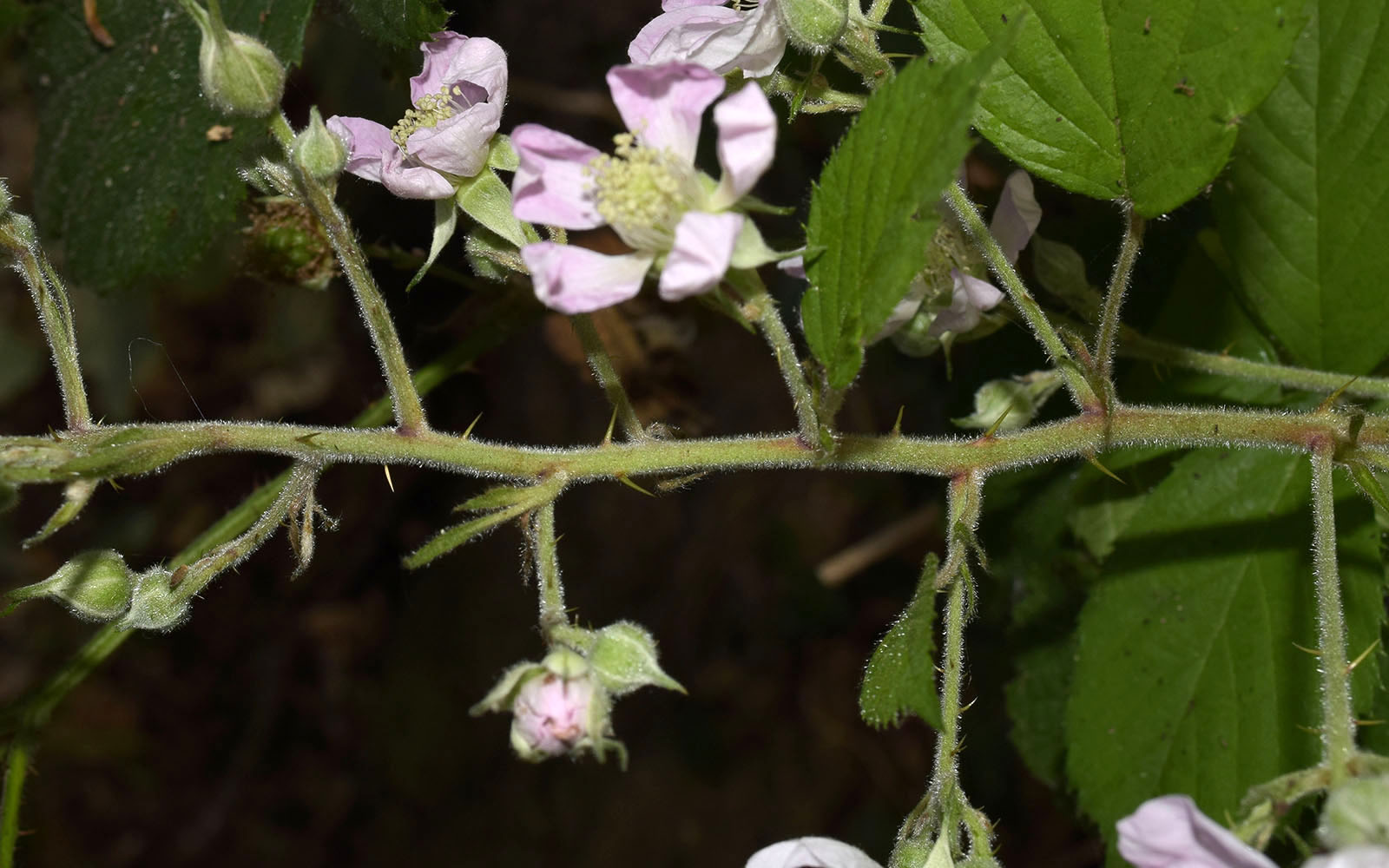
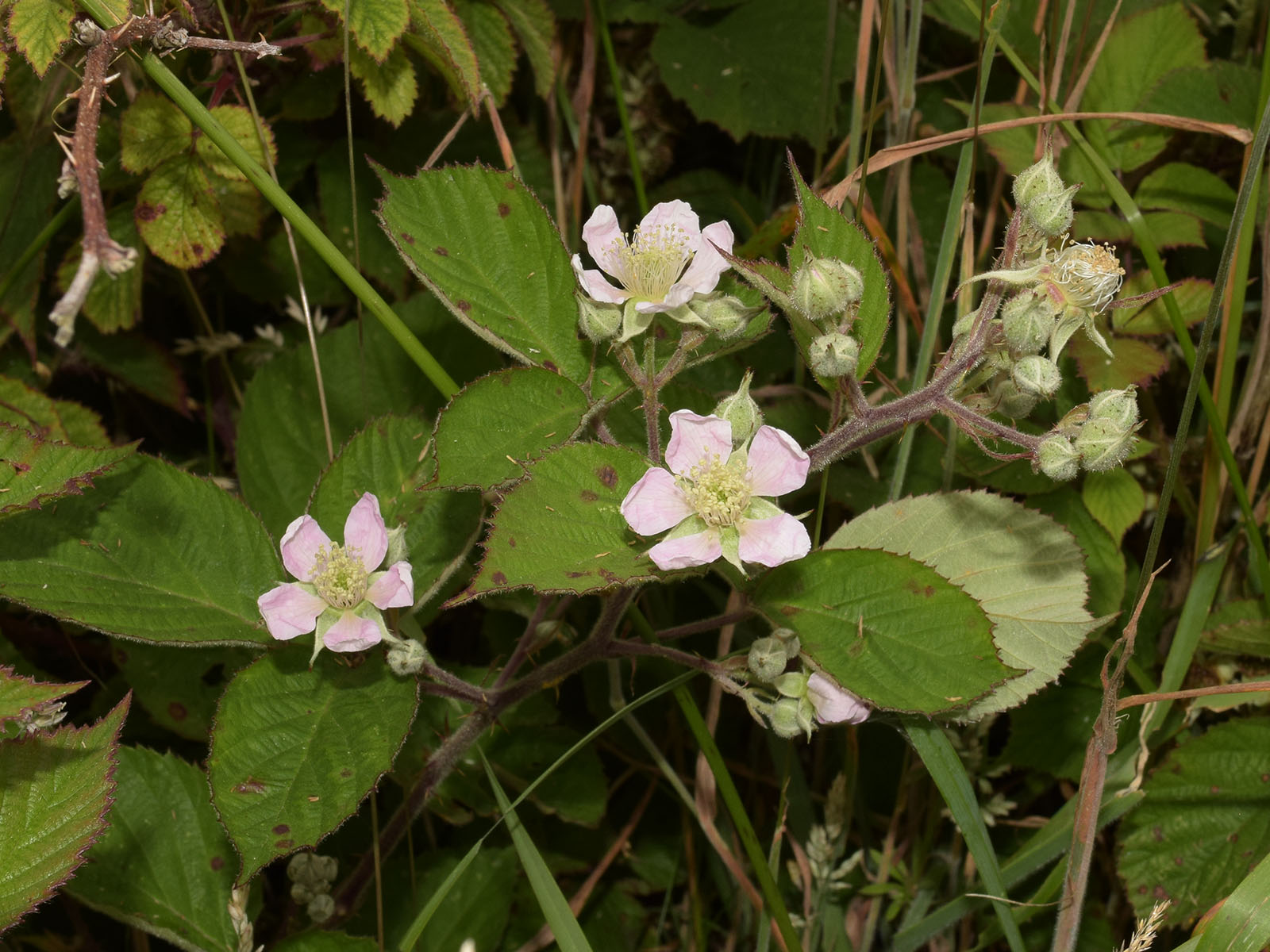
Flowers are c.2.5-3cm in diameter with bright pink petals in bud or when freshly open, but these usually turn a pale, creamy pink colour. They are broadly elliptical to obovate, c.14 x 8mm, and distinctly curled inwards, giving the flower a 'cupped' appearance. The petals are often notched or toothed at the tip. Stamens are relatively long and dense, styles are pale green. The young carpels can be glabrous or hairy.
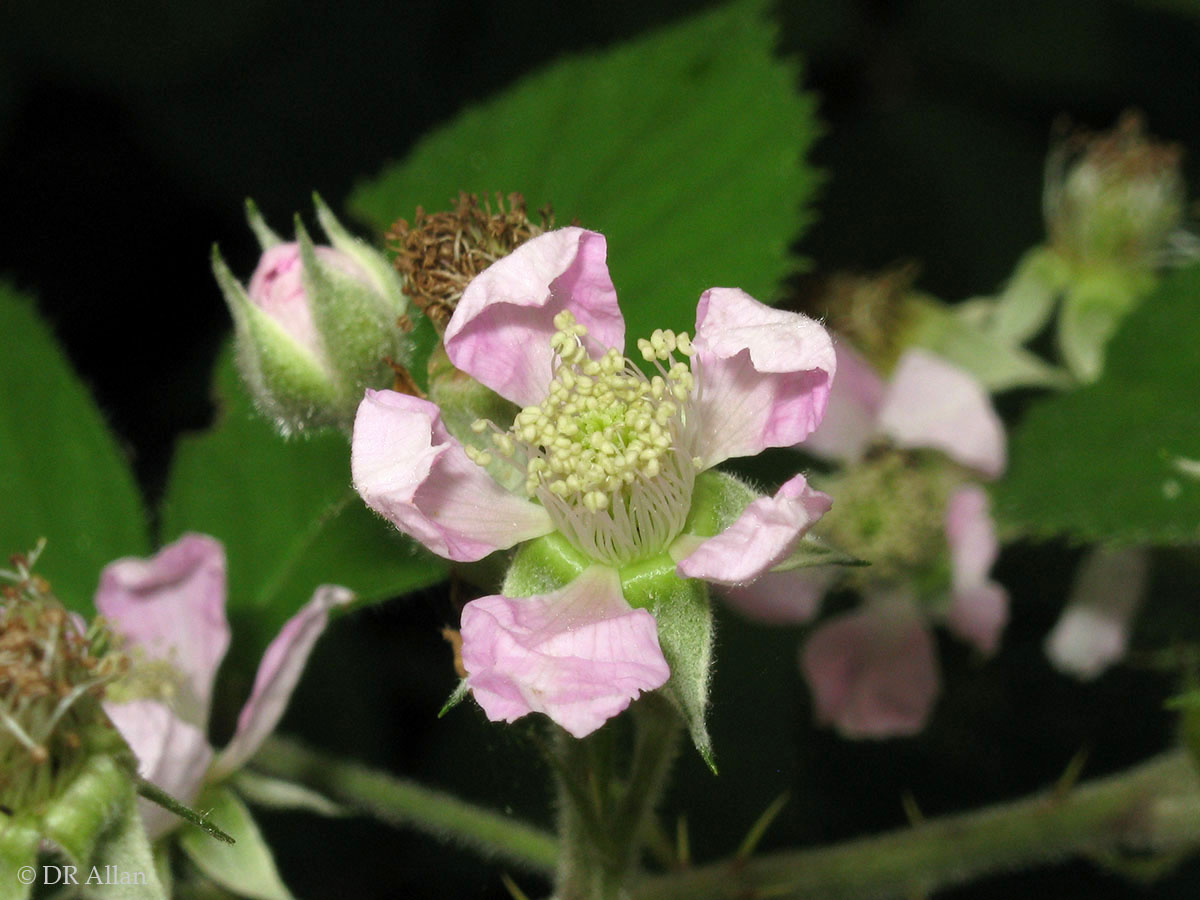

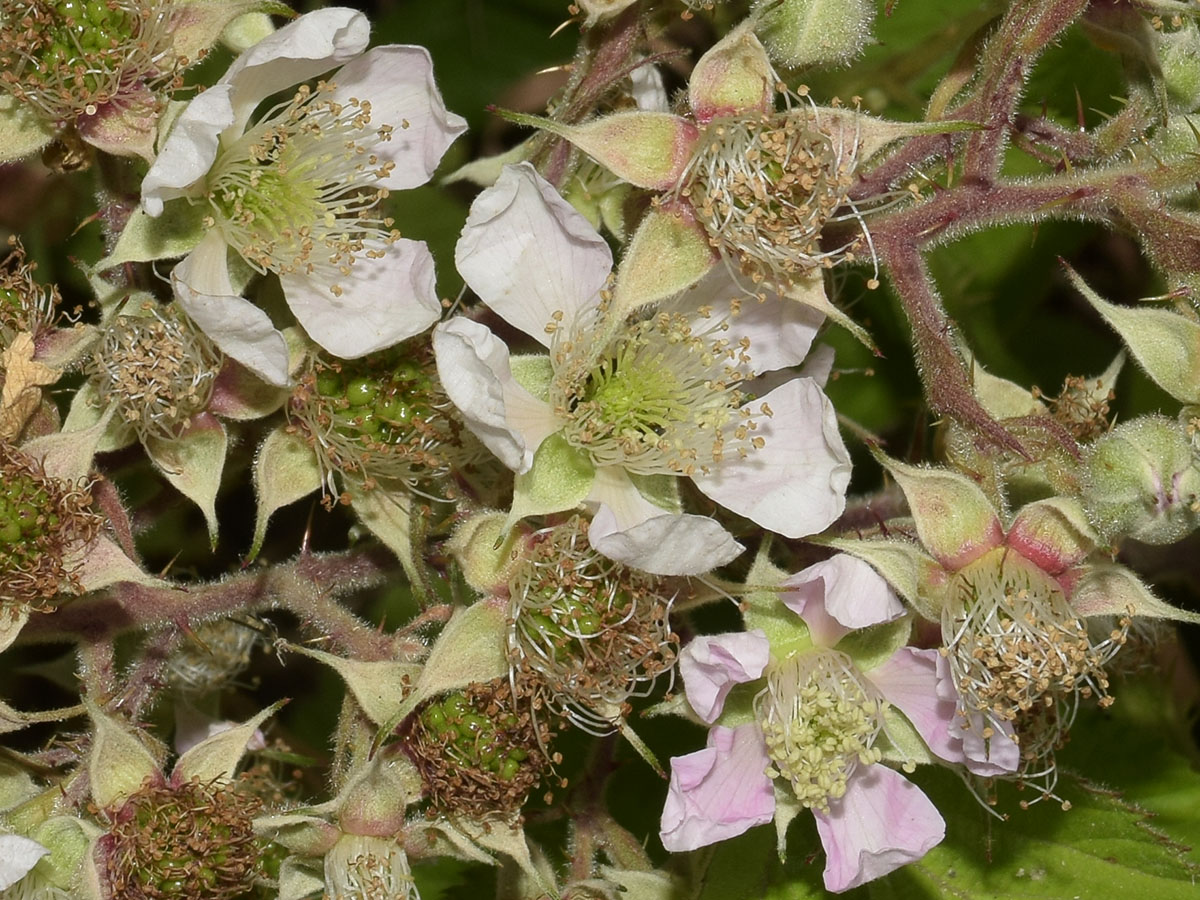
Sepals are long and finely pointed with green tips and pale edges; however the tips do not appear to become wider and distinctly 'leafy' as they do in some species. The sepals are pubescent with a few short-stalked glands and also frequent acicles which are usually inconspicuous but sometimes turn red (as in the second photo below). After the flowers open the sepals are usually patent (see photos above) or with the tips curled in various orientations.
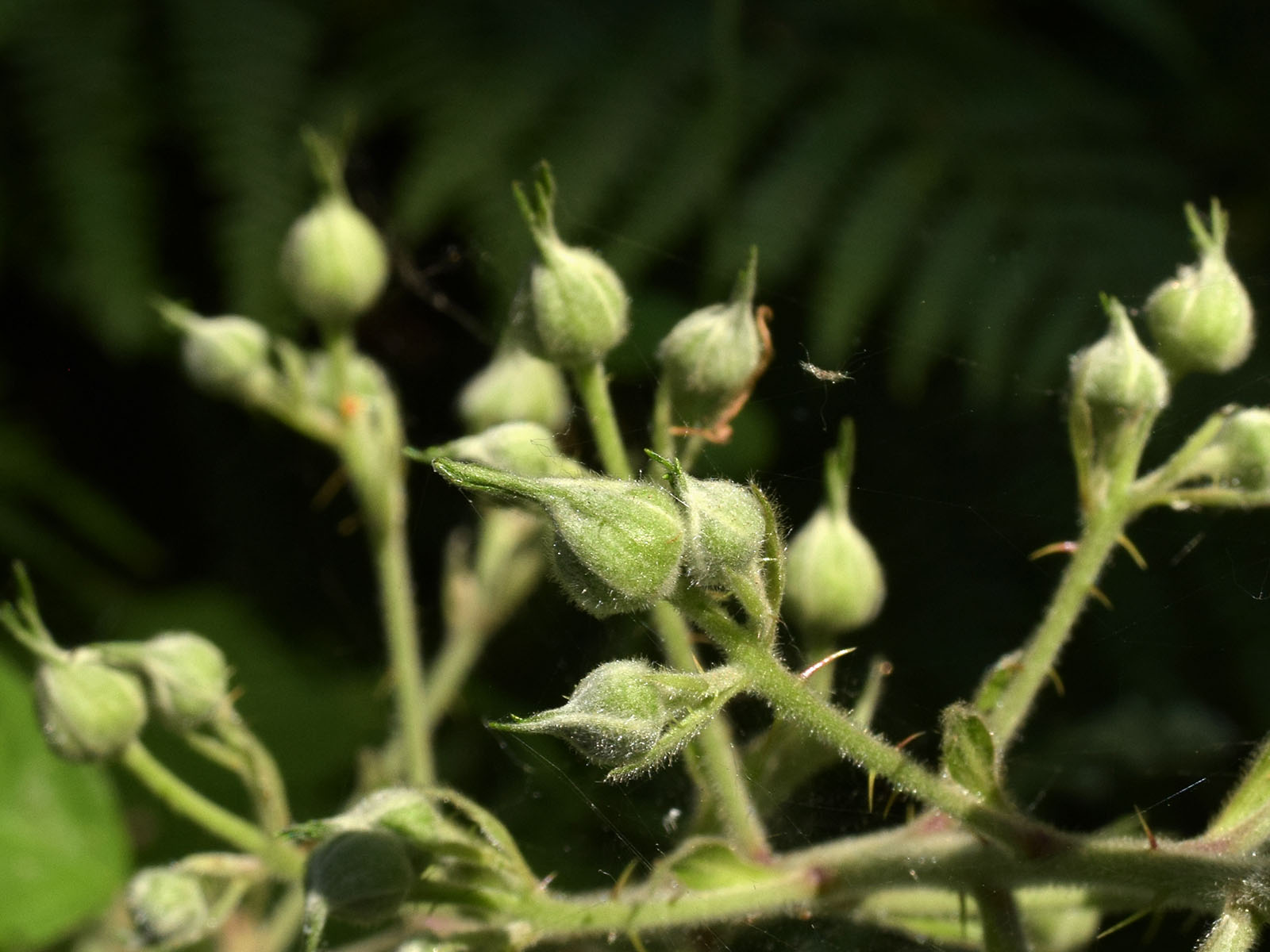
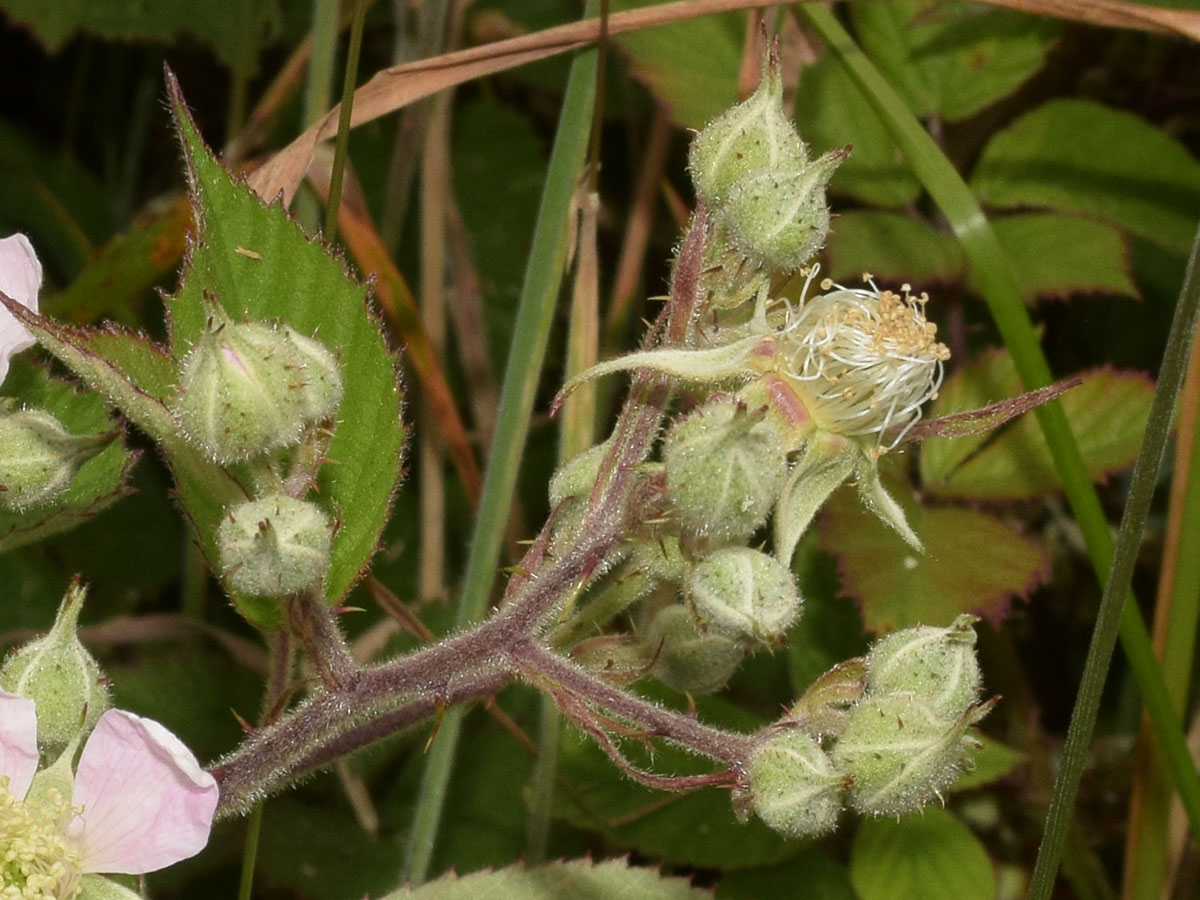
Leaflets are a mid-green to a light yellow-green in colour, matt above with sparse short hairs. The teminal leaflet is broadly obovate (the middle portion sometimes elongated slightly to give a more oblong shape), fairly large at 6.5-9.5 x 5.5-8cm, with a medium to long cuspidate tip and a slightly indented base (sub-entire to emarginate). The margins are shallowly but unevenly serrate, with the principal teeth often being quite distinct (especially noticeable in some of the panicle leaflets in the photos above). Some of these teeth near the apex of the leaflet may be curved towards the base of the leaflet.
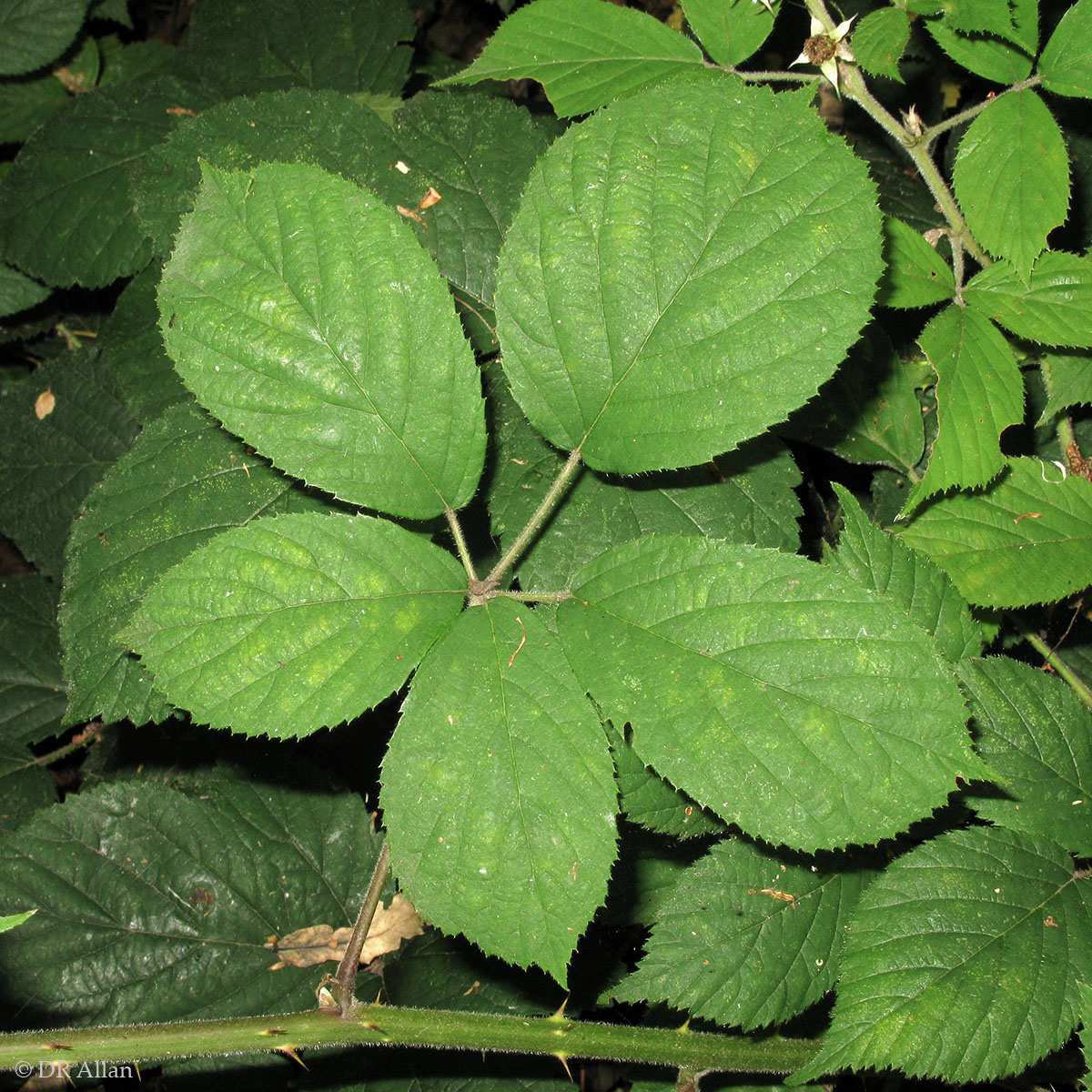

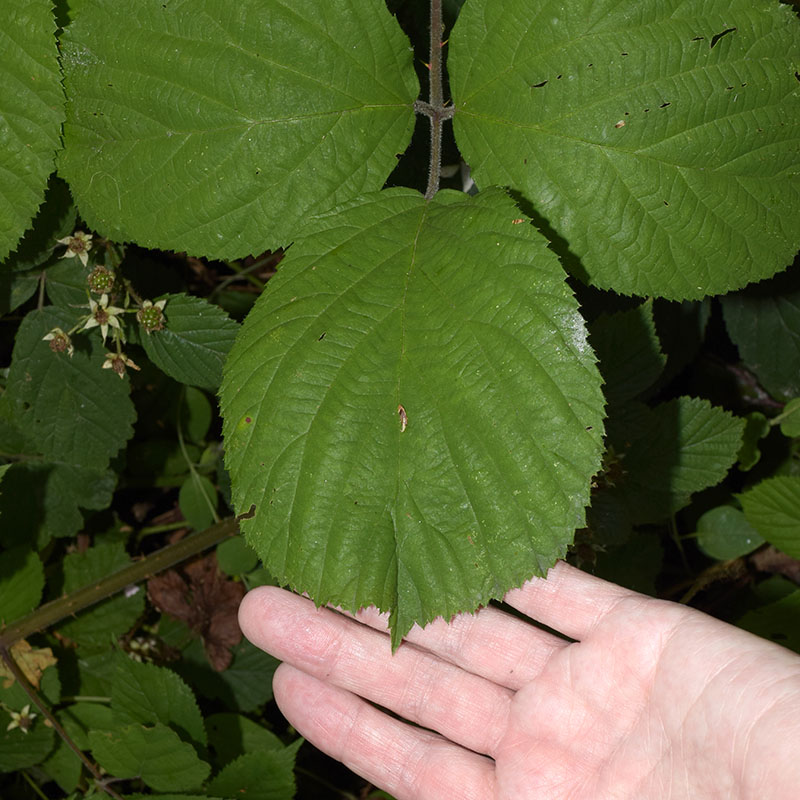
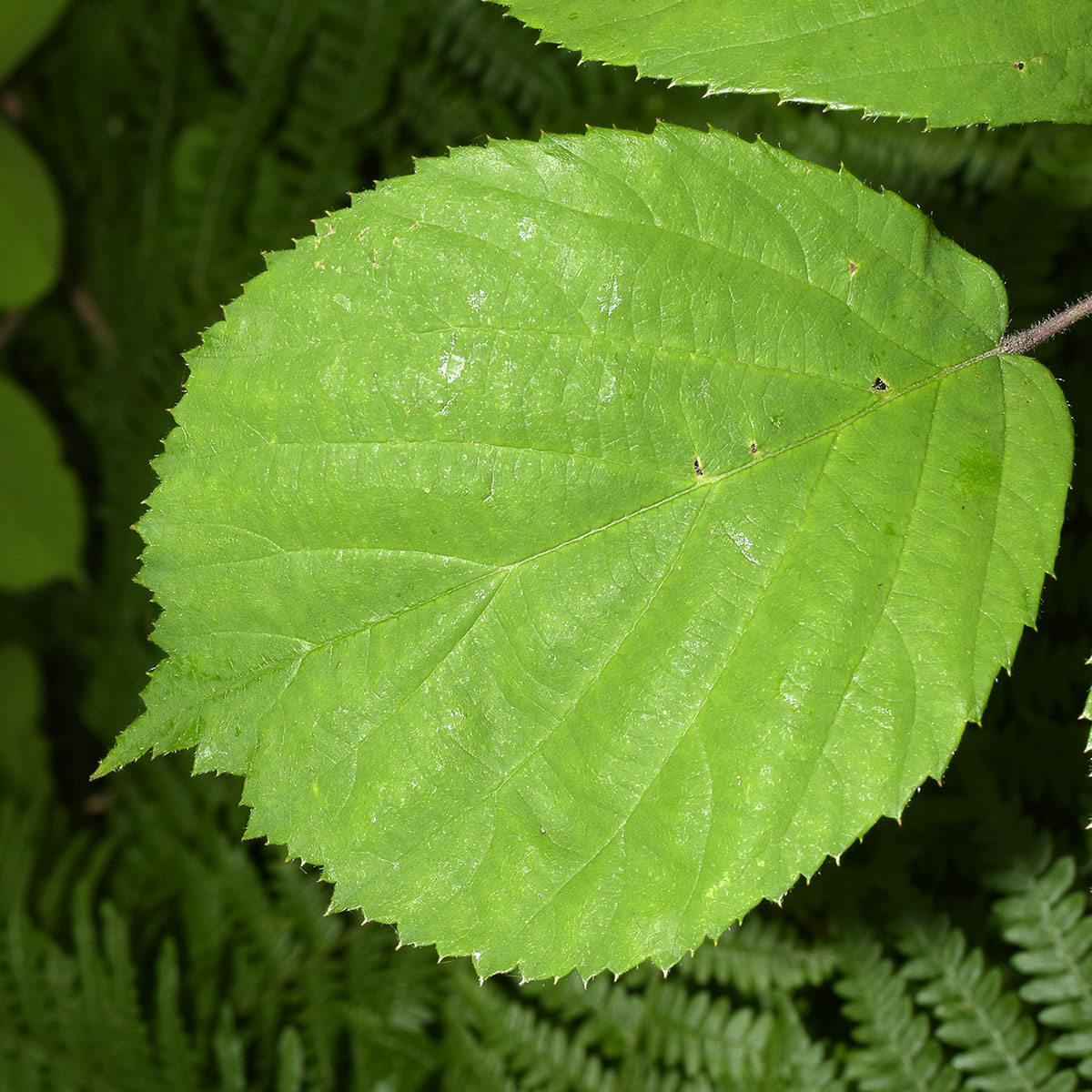
Leaves in a more exposed situation
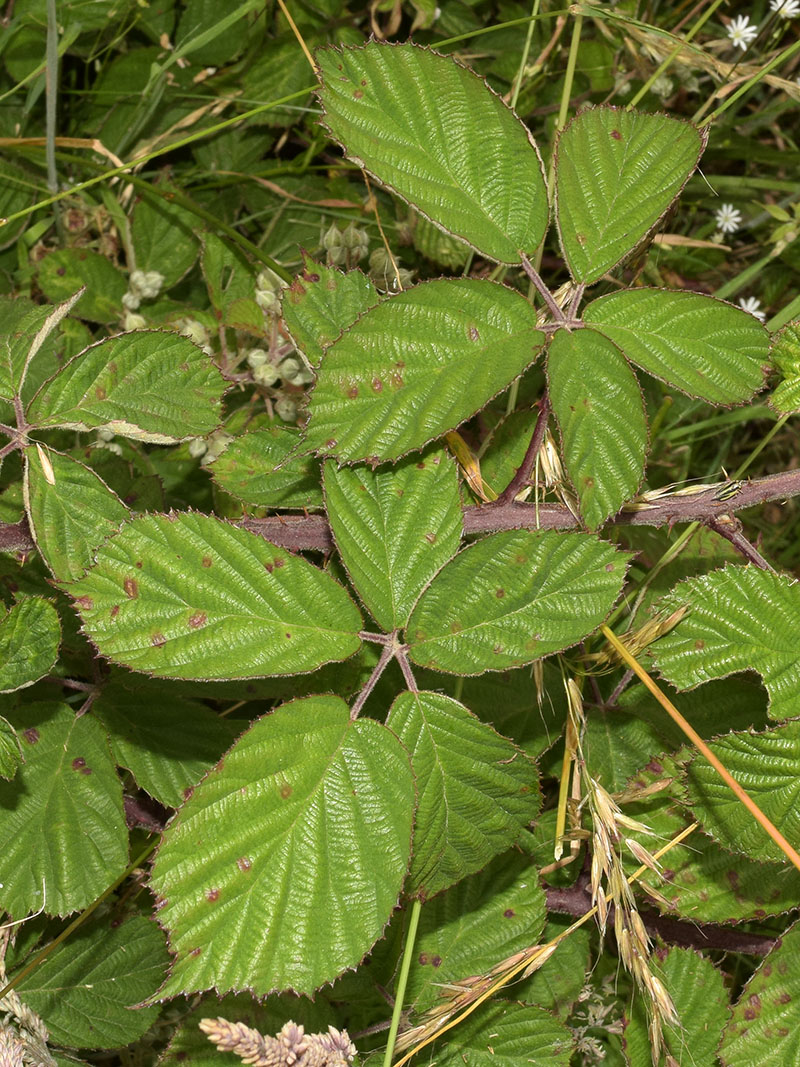
Leaflets are thinly to thickly whitish-grey felted below, with longer hairs on the veins (referred to as being 'pectinately arranged', i.e. 'comb-like').
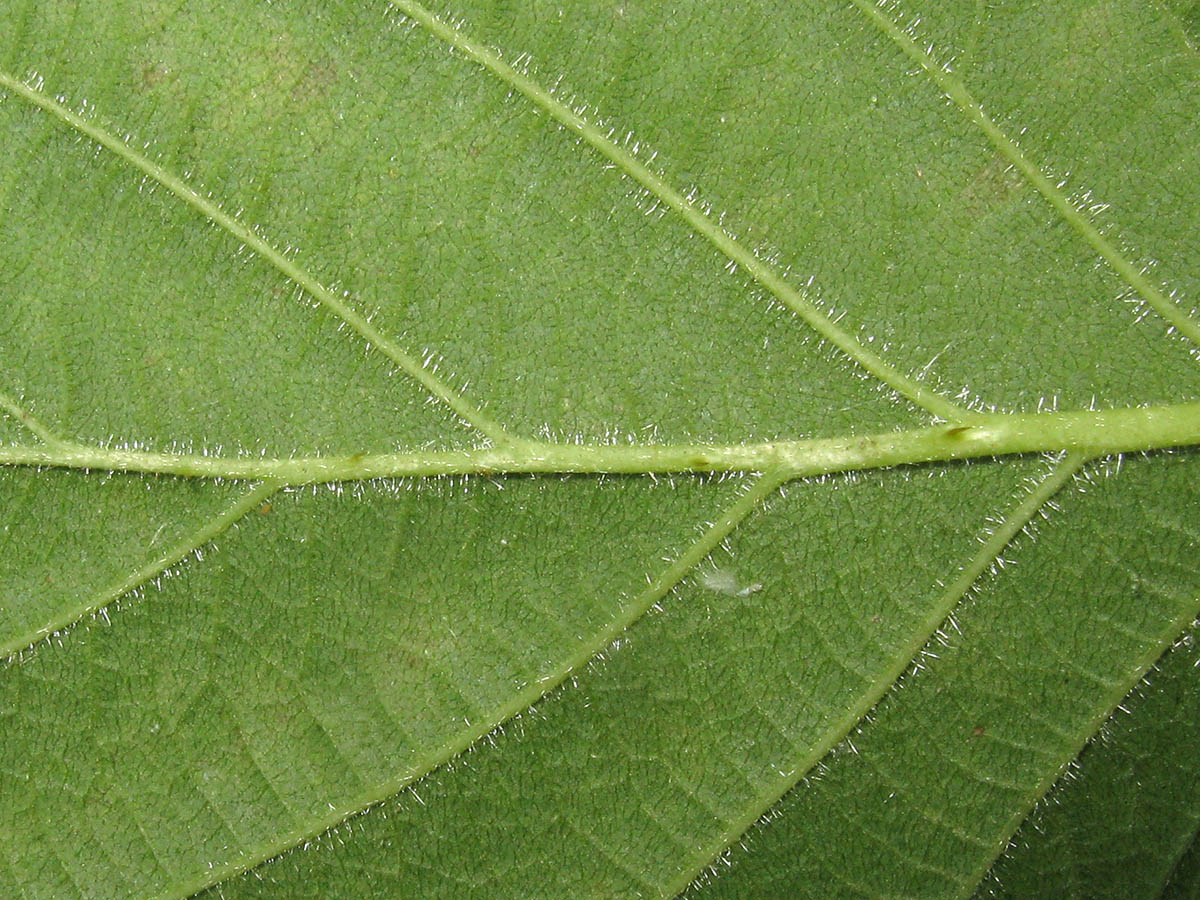
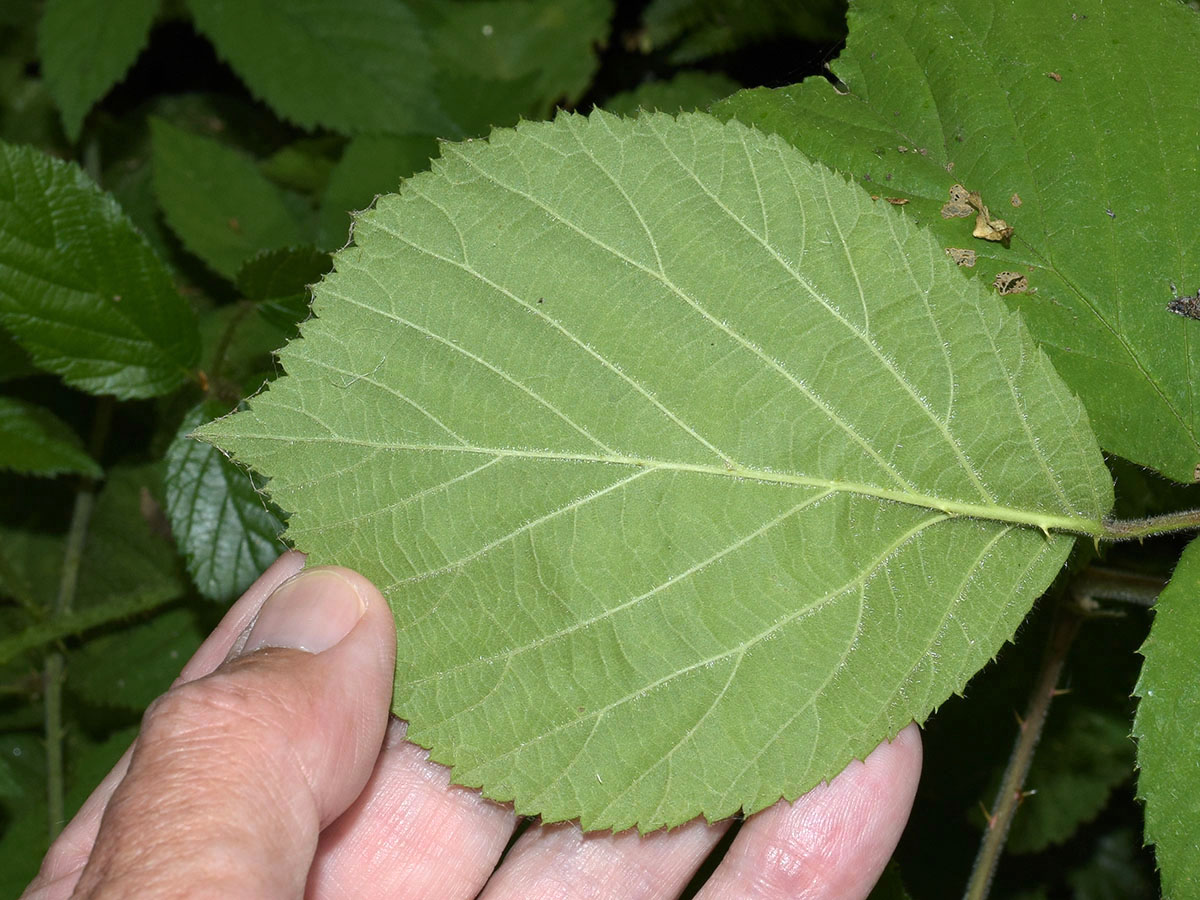
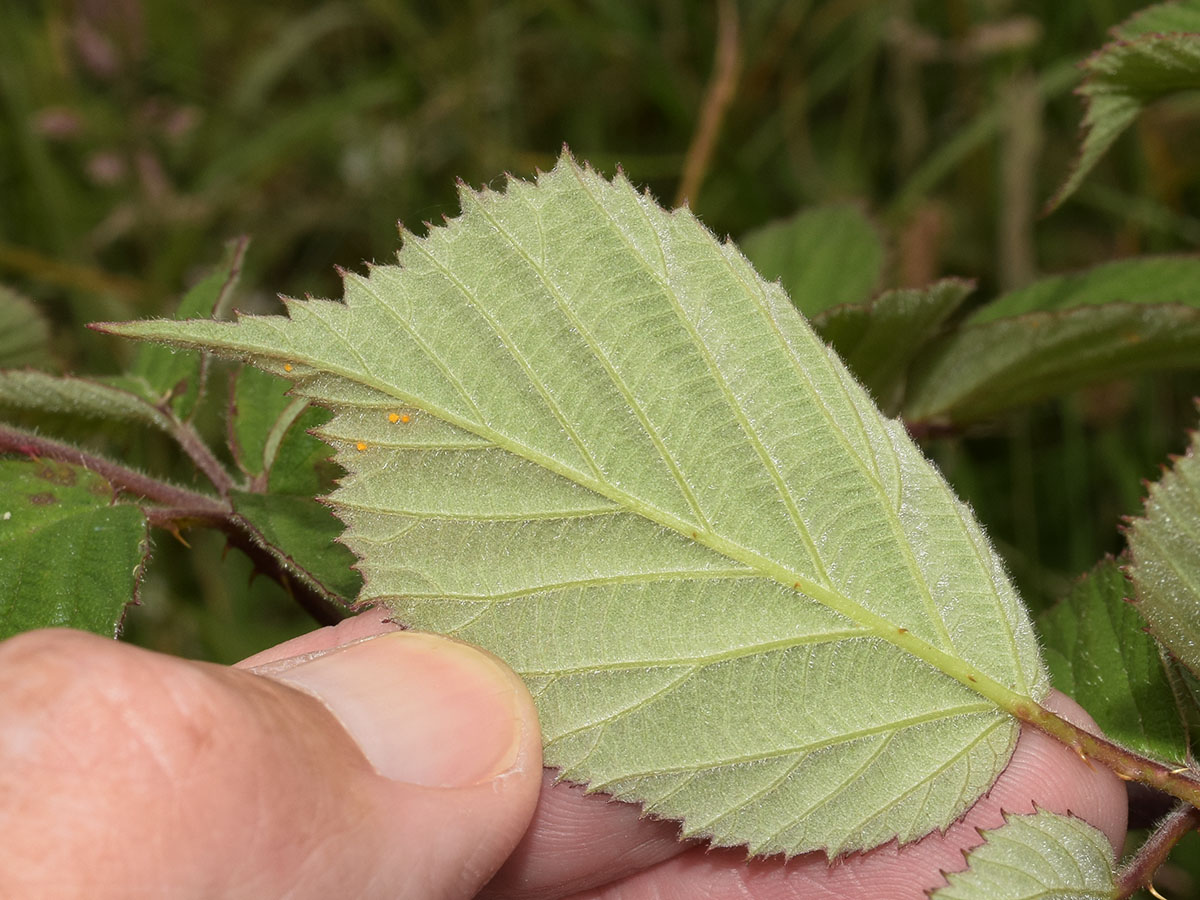
The first-year stem is typically fairly slender, with blunt angles and straight sides, densely covered in medium length hairs, with frequent slender downturned or slightly downcurved prickles roughly the same length as the width of the stem. The stem turns a dull reddish purple when exposed to the sun and the prickles develop contrasting yellow points.
